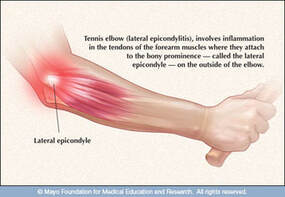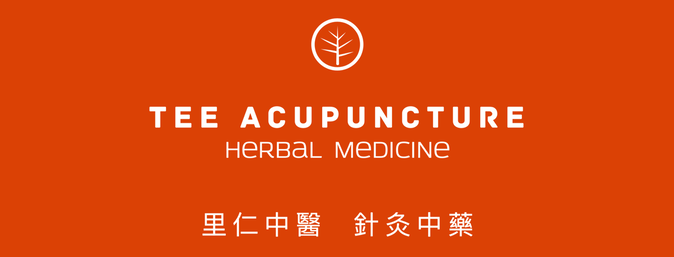|
Do you have #ShoulderProblems? Today, more people are going for an alternative treatment that is non-conventional, non-drug therapy such as #acupuncture treatment to treat their shoulder pain. Adding acupuncture treatment as a supplementary remedy to your conventional Western treatment may benefit the outcome and the recovery of your shoulder problems.
Many studies in Western medicine show the effectiveness of acupuncture in treating shoulder problems. According to a recent study performed by NYU Langone Medical Center, “benefits have been seen in studies of people with tendonitis in the shoulder. A trial of 52 people with rotator cuff (shoulder) tendonitis found acupuncture more effective than sham acupuncture. In addition, a study compared superficial to deep-insertion acupuncture in 44 participants with shoulder pain and also found relative benefits, which lasted for at least 3 months. In another study, 117 people with rotator cuff injury (including tendonitis) were randomized to receive corticosteroid injections plus exercise or 10 acupuncture treatments plus exercise. Both groups experienced similar improvements in shoulder function and pain.” According to the World Health Organization (@WHO), acupuncture treatment has been proven effective through controlled trials for peri arthritis of the shoulder. In another 2004 report performed at the University of Osla, according to LIVESTRONG.com, acupuncture treatment “provides long-term relief effect for neck and shoulder pain” for the female office workers who had chronic neck and shoulder problems, and 70% of the women reported improvement. The shoulder problems can be caused by several reasons due to their anatomical structures. Your doctor may diagnose your shoulder problems with your medical history, physical examination, and ordering imaging tests such as X-rays, ultrasound, MRI, and blood work to rule out certain conditions. These are great tools to physically diagnose your shoulder problems. Your doctor may also have started treatment on you with RICE (rest, ice, compression, and elevation), pain medications, and physical therapy, and asked you to modify or avoid certain activities that may aggravate your signs and symptoms. Sometimes, if a condition gets worse, surgery may be suggested. However, according to Dr. Nicholas DiNubile, an orthopedic surgeon specializing in sports medicine, “a comprehensive examination and evaluation must precede any surgical procedure. In most cases, a more conservative, nonsurgical approach is warranted, including a good rehabilitation program.” Later he adds that “postoperative pain from shoulder procedures usually lasts longer than that for similar arthroscopic procedures in the knee”. He states that his patients complain of pain for weeks and even months with discomfort and difficulty moving the shoulder. Therefore, one must discuss in detail and evaluates all options and conditions with his or her doctor before considering surgery for the shoulder. While acupuncture treatment is a safe and non-drug therapy, it has been shown effective in enhancing the self-healing effect, reducing pain, swelling, and inflammation in our body, and reducing or avoiding the use of drugs. It can give you immediate relief and provide long-lasting benefits after treatment. My focus and interests in acupuncture have included #musculoskeletal pain management and #sports medicine acupuncture. I would be happy to work with you and discuss with your doctor how acupuncture treatment can be a supplementary treatment to your recovery from your shoulder problems.
0 Comments
 Now, let's talk more about the symptoms and how they are diagnosed and treated in Western and Eastern medicine. As shown in the picture by Mayo Clinic, the inflammation occurs "in the tendons of the forearm muscles where they attach to the lateral epicondyle." These muscles are called the "extensors of the wrist and hand". When these extensors are stressed repetitively, tennis elbow symptoms would gradually begin. The main symptom is of course #PAIN!! This pain may radiate down to the forearm, wrist, hand, or up to the shoulder or neck. To diagnose, a medical doctor may order X-ray imaging and blood tests to rule out bone fractures or other medical conditions, and MRI or EMG to rule out spinal injuries or pinched nerves. In many cases, the description of the pain by the patients, medical history, and physical exam are used to diagnose tennis elbow. How is it treated in Western Medicine? Treatments and medications include resting, ice treatment, NSAIDs (non-steroidal anti-inflammatory drugs), physical therapy, and modification of activities for an athlete. Occasionally, a#CortisoneInjection may be used in the painful area. According to The Merck Manual surgery may be considered if after 9 to 12 months of unsuccessful conservative treatment. For Traditional Chinese Medicine (TCM), the tennis elbow is identified as "Elbow Strain", "Elbow Taxation (Zhou Lao 肘勞), "Elbow Pain (肘痛), or a type of injury to the tendon and muscles (Shang Jin 傷筋). The strain and taxation in the elbow are described as overworking and overstraining which can cause the exhaustion of the Qi and Blood (energy flow and blood circulation) of the body, leading to the malnourishment of the body structures. A TCM practitioner may also evaluate and determine if any underlying conditions of the internal organ imbalances are involved. Although common structures are involved in the tennis elbow for everyone, the treatment strategy and planning can be very different based on individual cases and body constitutions since we are unique individuals. To treat tennis elbow in TCM, acupuncture is considered one of the modalities to alleviate pain symptoms. Other modalities include cupping, bleeding technique (not as awful as it sounds!), moxibustion, electric acupuncture, and auricular acupuncture may be considered. Different practitioners may use different modalities to treat based on the syndrome analysis obtained while doing the intake of the patient's chief complaints. The general treatment strategy is to soothe the tendons and activate the circulation of the body's meridians, energy flow, and blood circulation to reduce pain. Contact our clinic today for #FREE consultation with the promotion until the end of this August month! Visit www.TeeAcupuncture.com for more info. Share this news with your friends and family members. Stay healthy! #TCM, #acupuncture, #cupping, #moxibustion, #TennisElbow #Sprains and #strains according to @WebMD are used interchangeably to describe everything from a twisted ankle to a pulled hamstring, but they are two specific injuries.
A sprain is a stretch or tear in a ligament (the bands of fibrous tissue that connect our bones at the joints). A strain is also a stretch or tear, this time affecting the muscle itself or a tendon (the tissue that connects the muscles to the bones). |
AuthorDr. Kang P. Tee is a Doctor of Acupuncture and Chinese Medicine, New York State Licensed Acupuncturist and Board Certified Diplomate of Acupuncture and Herbalist by NCCAOM. His interests include musculoskeletal Archives
May 2015
Categories |

 RSS Feed
RSS Feed